Pay for Arizona’s Elementary Teachers Remains Low Among National Rankings; Secondary Teachers See Decline in Ranking Year-Over-Year

Center for the Future of Arizona (CFA) and Education Forward Arizona recently released updates to the Arizona Education Progress Meter, the state’s widely accepted framework for measuring P-20 education.
Attracting and retaining skilled teachers in Arizona has long been a challenge. For this reason, education leaders chose to focus on a measure of retention—median annual salary—as a way of bringing attention to the issue. Since the measure was introduced in 2016, Arizona’s elementary and secondary teachers have remained near or at the bottom nationally. In spite of efforts to increase pay, national pay increases have kept pace with those in Arizona, virtually nullifying the progress toward achieving the national median (Figure 1).
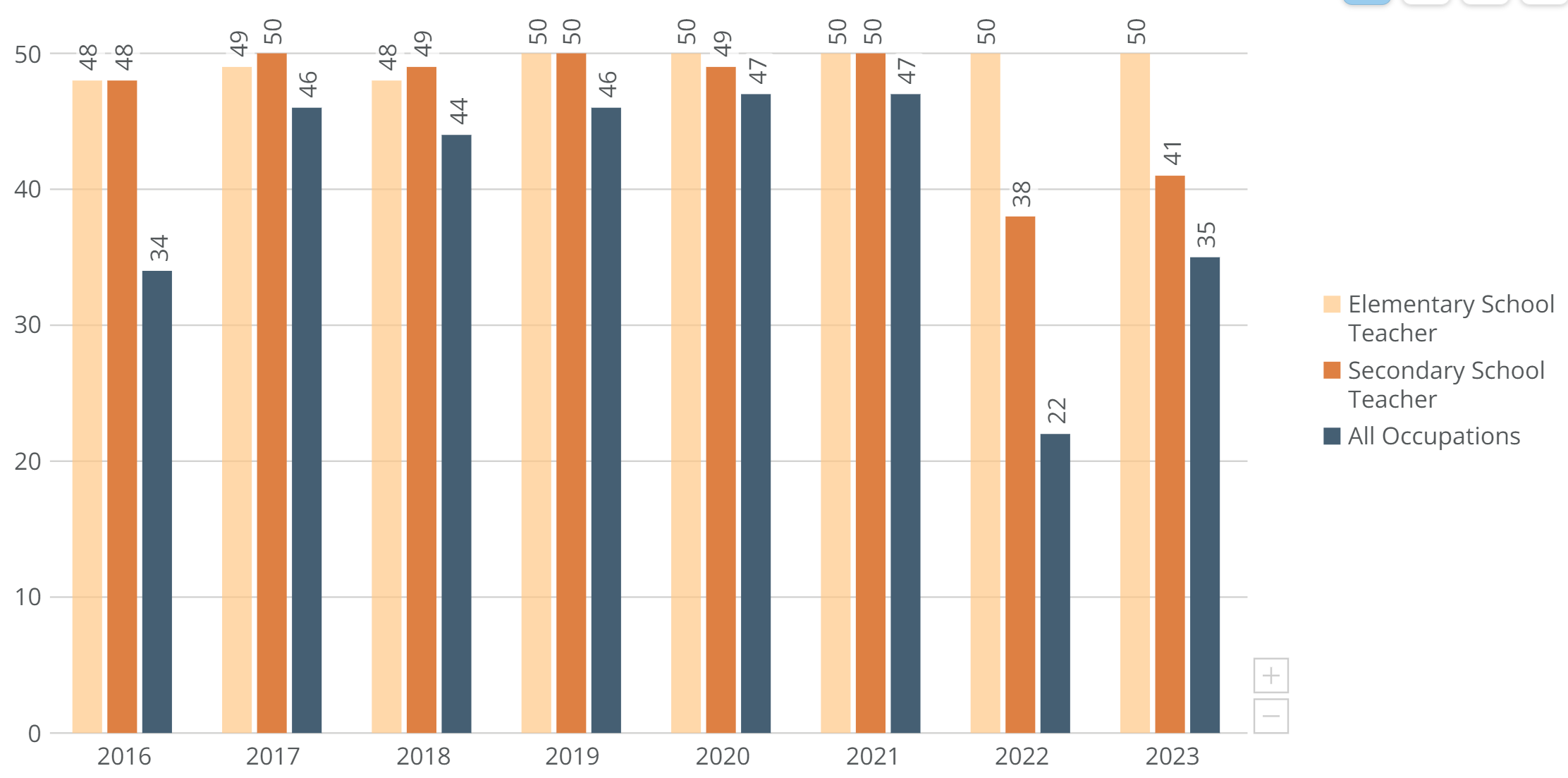
Figure 1: Since 2016, the adjusted median pay for Arizona's elementary school teachers has remained close to the bottom nationally. Secondary school teachers have seen recent improvement.
From 2016 to 2021, Arizona’s national ranking for adjusted median salary declined from 34th to 47th. Wage hikes, including the increase of the state’s minimum wage starting in 2017, can account for some of the improvements in the wage increases, most notably seen in the 2022 ranking improvement from 47th to 22nd. The state’s minimum wage jumped in 2017 from $8.05 to $10/hr and as of 2024 is at $14.35/hr which helps to explain the ranking improvement across all occupations.
Methodology and other data limitations (including not adjusting for inflation between releases) limit the use of these Bureau of Labor Statistics Occupational Employment and Wage Statistics (OEWS) for comparison from year to year, but for purposes of understanding the amount of progress since the first year of the Teacher Pay indicator in 2016 to the 2023 update, Figure 2 demonstrates the change in non-inflation adjusted salaries for teachers, all occupations, and some selected careers that require a commensurate amount of education and training as educators.
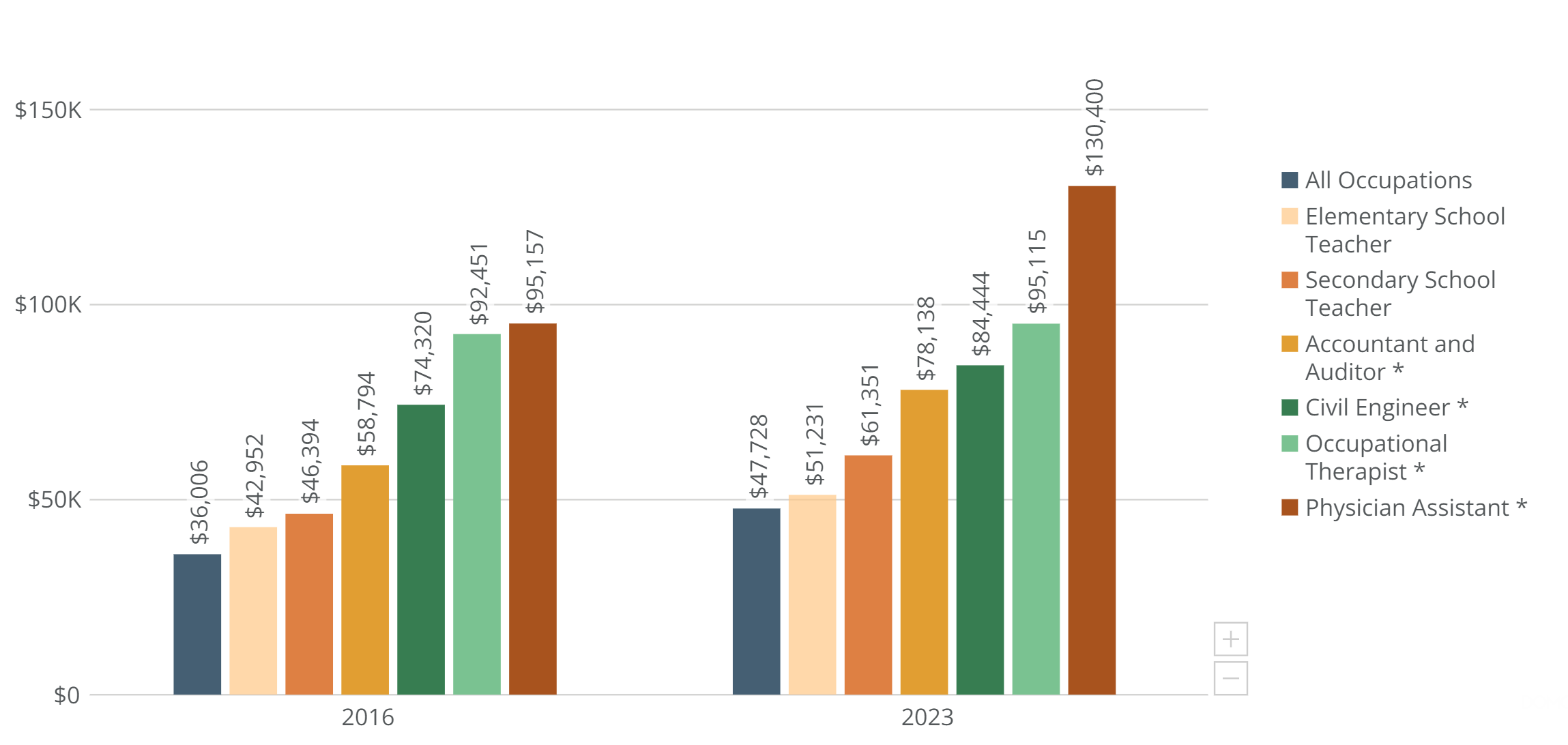
Figure 2: Since data was collected in 2016, Arizona's elementary teachers have seen a cost adjusted median wage increase of about 19%. Secondary teachers have seen an increase of 32% while all occupations have seen increases of 33%. Inflation is not considered in this calculation.
The cost-adjusted median annual pay of all Arizona occupations increased by 33 percent from 2016’s data release to 2023 while Arizona’s elementary teachers saw an increase of about 19 percent and high school educators jumped 33 percent. As these are not inflation-adjusted, significant cost increases across housing, food, and other goods and services significantly reduced the overall value of these wage improvements. Qualified teachers are in high demand and can take their credentials to find jobs in higher paying or otherwise more attractive states, so the ranking of salary is more important for this measure than the actual pay increase observed in the data.
As shown in Figures 3 and 4, most of Arizona’s neighboring states have significantly higher median pay for both elementary and secondary school teachers, even adjusted for cost-of-living variation. Arizona’s elementary school teachers earn about $10,000 less than the lowest neighboring state (New Mexico) which pays over $61,000 annually. Even when adjusted for the higher cost of living, California’s elementary school teachers earn almost $86,000. High school teachers in Arizona see a somewhat better competitive landscape with similar adjusted median wages to some nearby states, but almost $30,000 lower pay than California./p>
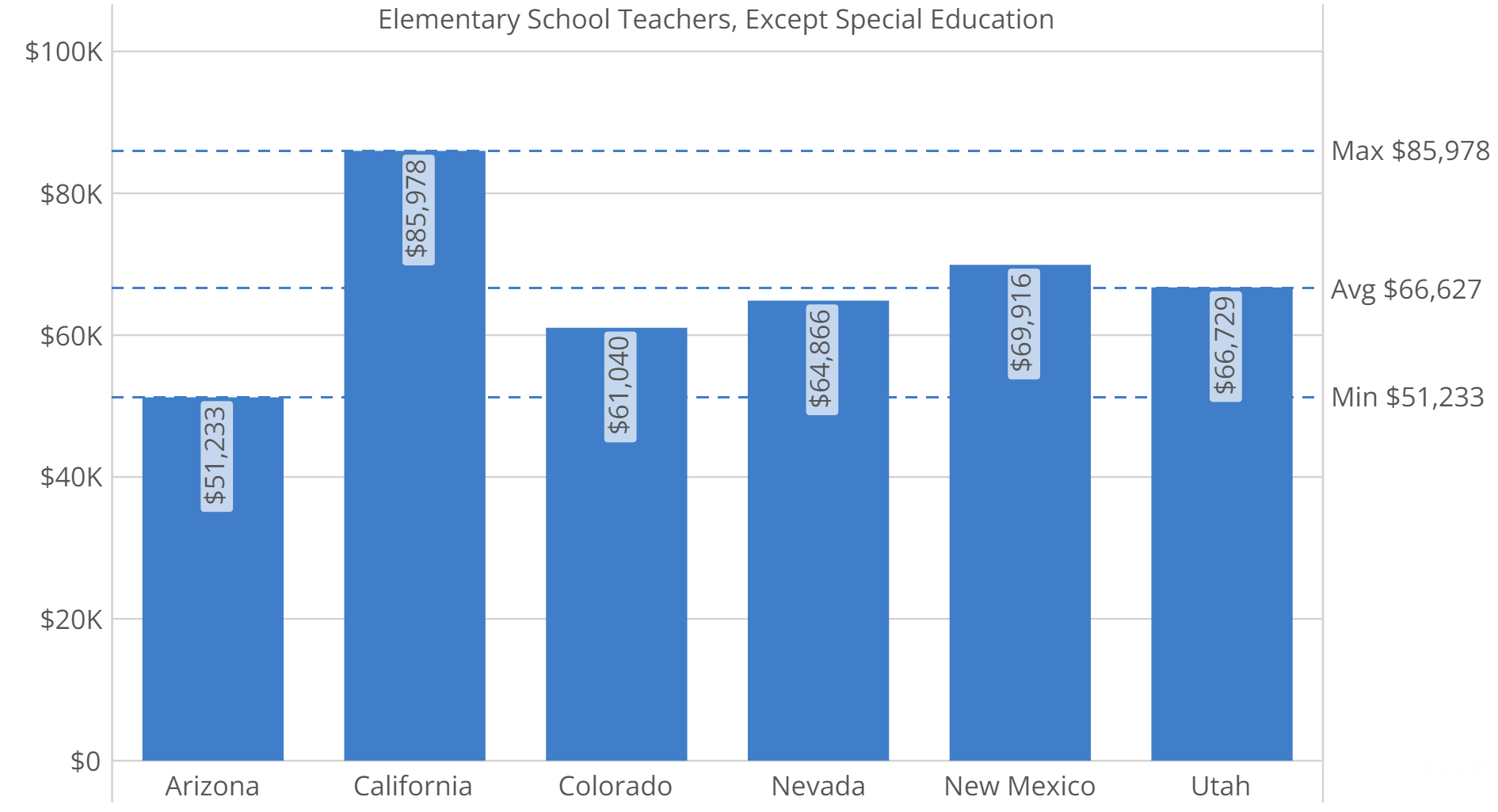
Figure 3: Comparing the adjusted median pay of elementary teachers in Arizona to its neighboring states, there is a significant competitive disadvantage.
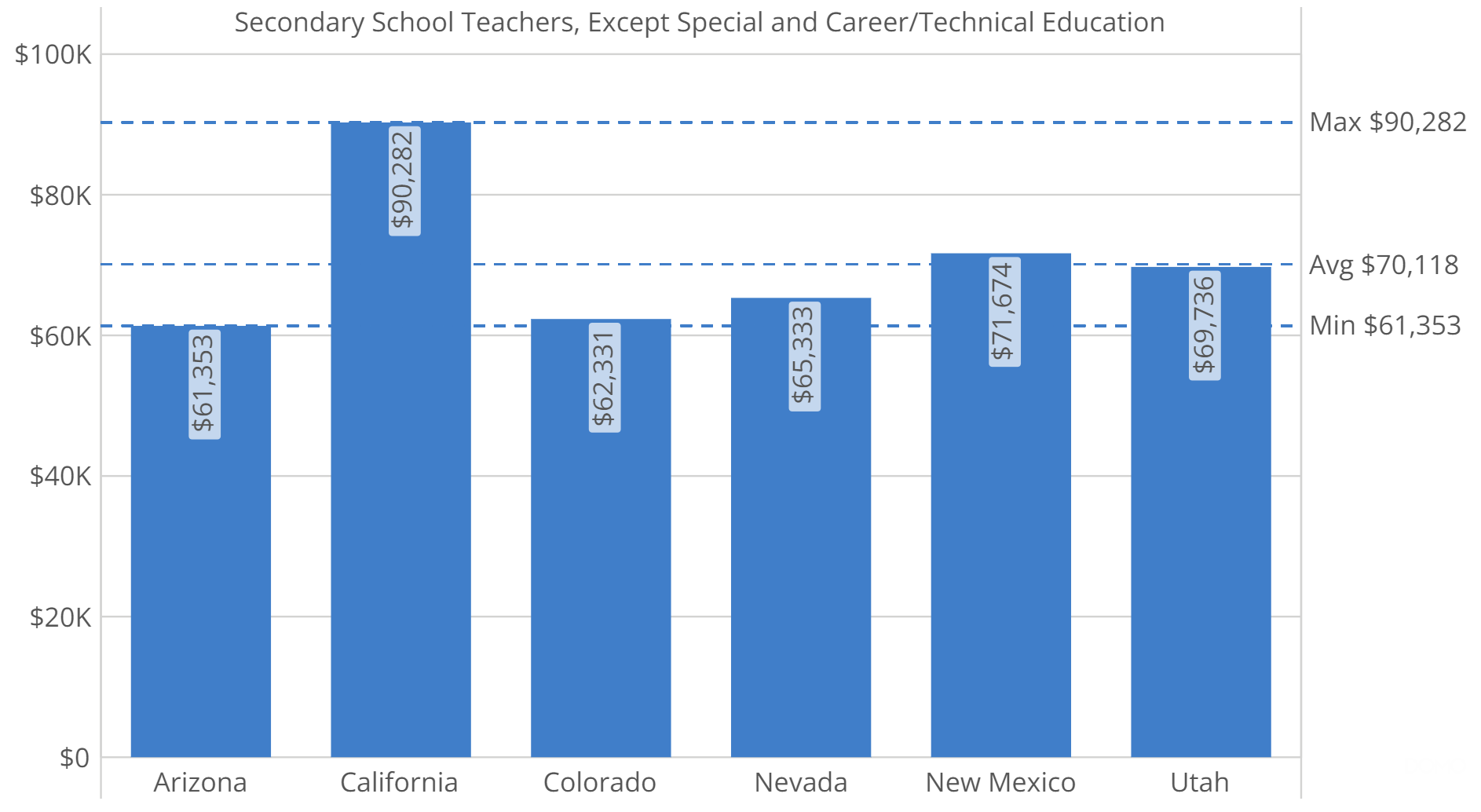
Figure 4: Arizona's secondary school teachers have a competitive adjusted median salary to nearby Colorado but remain significantly lower than other neighboring states.
A deeper look in the OEWS data allow the comparison of adjusted annual pay across the spectrum of teachers’ experience. Figures 5 and 6 support the comparison of adjusted pay at the 10th, 25th, 50th (Median), 75th, and 90th (top 10 percent) percentiles. To simplify comparison, these have been labeled to correspond with the approximate stage in career, with higher paid teachers being more senior. Note that though Arizona’s adjusted median pay is significantly lower than its neighbors, it is competitive for entry-level wages (10th percentile) as compared with Colorado, though it’s much lower than the other states. For high school teachers, Arizona’s 10th percentile is somewhat higher than Colorado but much lower than other states.
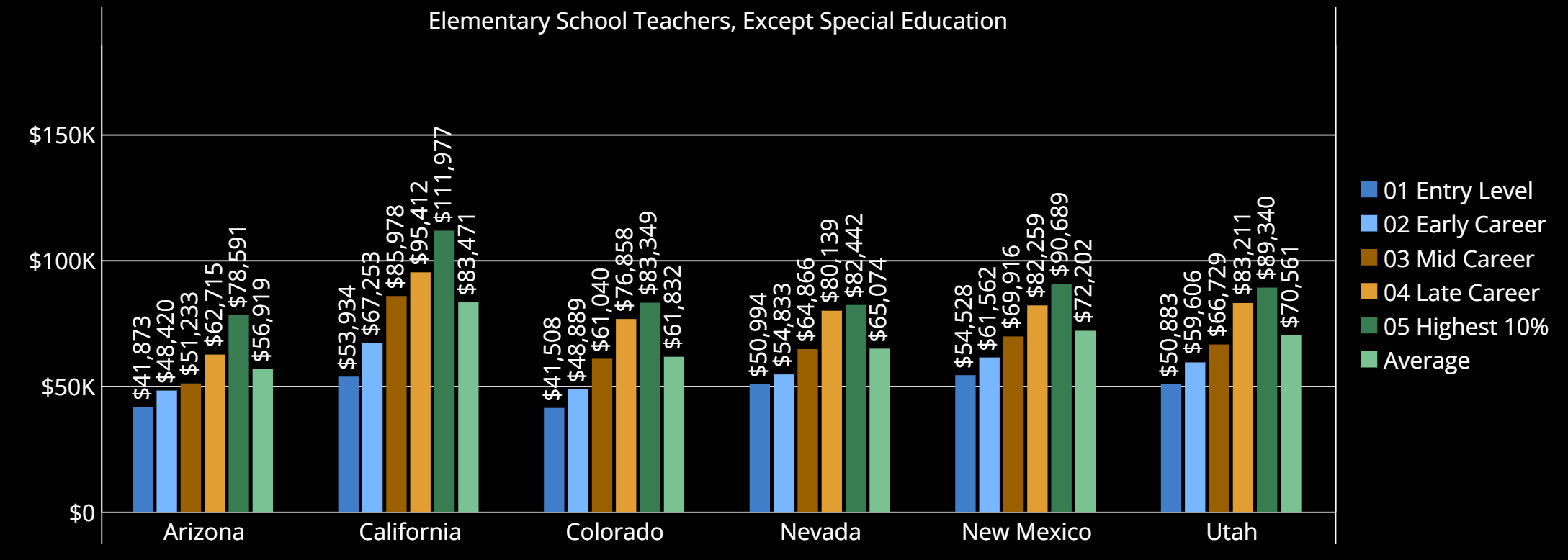
Figure 5: Comparing Arizona teachers' adjusted median salaries across stages of career, reveal areas where the state is less competitive than its neighboring states.
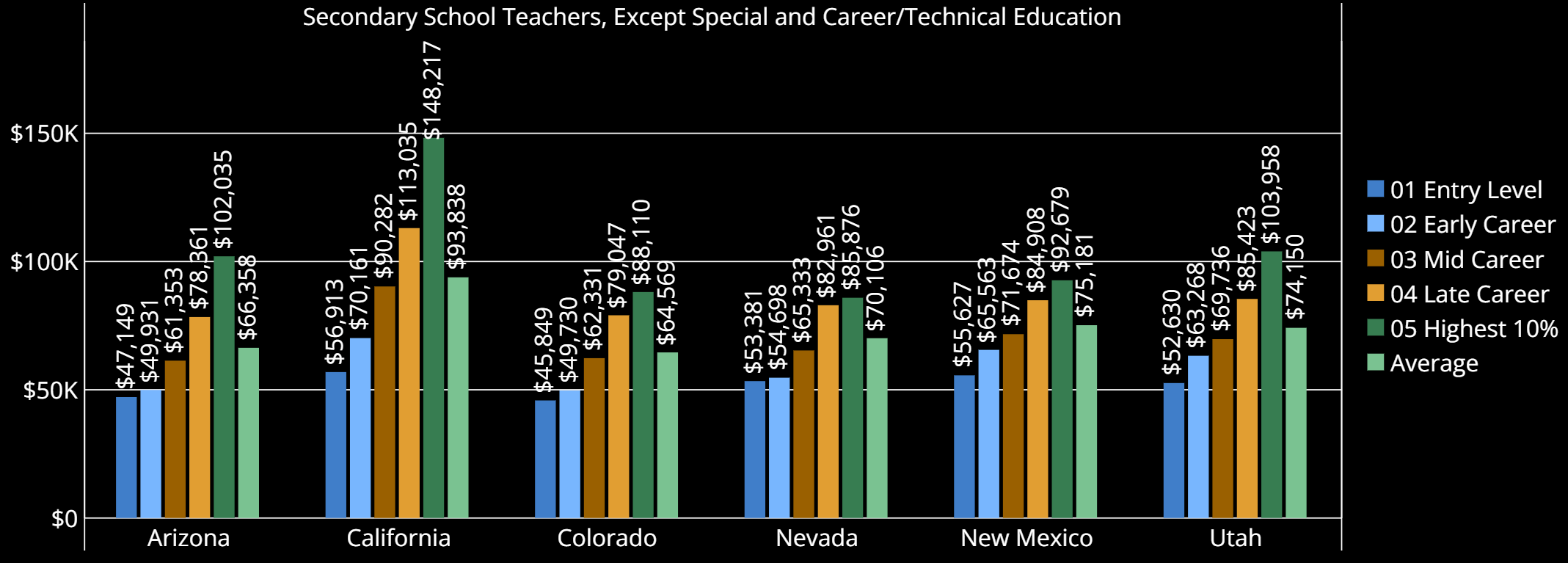
Figure 6: Arizona's adjusted annual pay across stages of career indicate places where the state is less competitive than its neighbors.
Across the data, the following observations can be made:
- Arizona’s elementary school teachers have the lowest annual adjusted median salary of all U.S. states.
- Secondary school teachers have a relatively competitive adjusted median wage with a ranking of 41st but remain in the last quintile.
- Progress at improving Arizona’s median pay ranking has been slow, and nationally other states have equaled or surpassed the rate of increase, preventing an improvement in ranking.
Teacher pay is a challenging metric to interpret as pay could easily be a product as much as a contributor to the problem of attracting and retaining highly qualified teachers. It could be that Arizona has a hard time retaining teachers for various reasons, outside of pay, and that with relatively junior educators, pay is lower due to the relative lack of seniority, rather than overall lower pay alone. This “chicken or egg” problem requires a comprehensive look at the complete set of retention variables for educators, cost of living, complexities surrounding English-as-a-second-language learning, workplace culture, and many other factors. Relatively low pay of Arizona’s educators, however, merits a closer look at salary and how the state can use pay as one approach to addressing the teacher retention challenges of our current system.
What Do Arizonans Think About Teacher Pay?
In the 2022 Arizona Voters’ Agenda, 88 percent of likely voters overwhelmingly supported increasing teacher pay. As one of the items with very strong support, increasing pay for teachers is one approach to addressing the teacher retention crisis. In the most recent Gallup Arizona Survey, 92 percent of respondents agree that every school should have enough highly qualified teachers and principals, placing emphasis on strategies that will attract and retain talented and experienced educators.
Dig Deeper – Analyze Data to Support Investment and Action
Data on the adjusted annual pay for teachers and other occupations are available in the Arizona Education Progress Meter. At the bottom of the Teacher Pay indicator page are interactive data that support the exploration of pay across occupations, stages of career, and location.
About Our Data Sources
As with all the Arizona Progress Meters, data are publicly available from a trusted and regularly updated source. Data used in the Teacher Pay metric are acquired from the Bureau of Labor Statistics, Occupational Employment & Wage Statistics, 2023 series and Bureau of Economic Analysis, Regional Price Parities (RPP), 2022 series. Annual wage data are adjusted by cost of living using the RPP to support a better comparison across states. For more information, see our full methodology.
About Arizona Progress Meters
CFA developed the Arizona Progress Meters as a tool for policymakers, business leaders, civic leaders, educators, and others across the state to understand how Arizona is doing in areas critical to achieving The Arizona We Want. Eight Arizona Progress Meters provide valuable and regularly updated data on 80+ metrics in education, jobs, healthcare, environment, civic engagement, infrastructure, and more to support policymakers and other leaders’ data-driven dialogue, decision-making, and action. Learn more and leverage all the Arizona Progress Meters today >>
